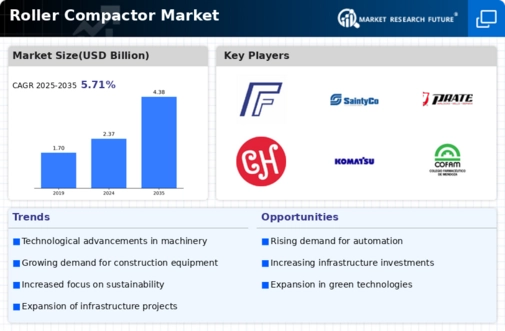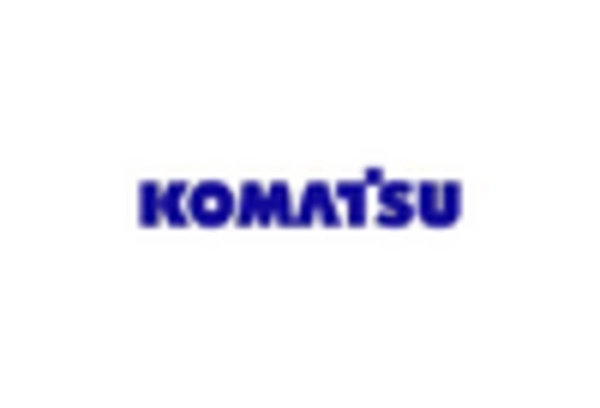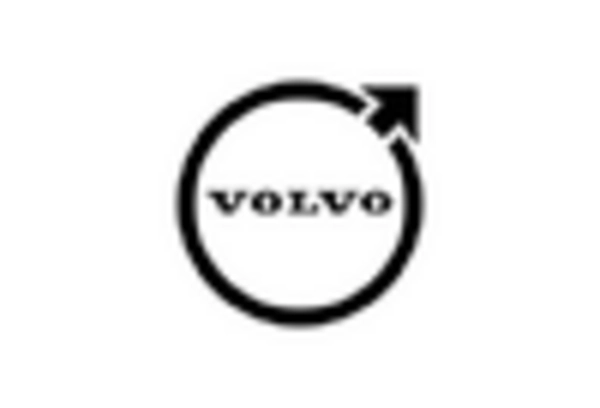The Roller Compactor Market is currently characterized by a dynamic competitive landscape, driven by increasing infrastructure development and a growing emphasis on efficient compaction solutions. Major players such as Caterpillar (US), Volvo Construction Equipment (SE), and Komatsu (JP) are strategically positioned to leverage their technological advancements and extensive distribution networks. Caterpillar (US) focuses on innovation, particularly in the realm of sustainable machinery, while Volvo Construction Equipment (SE) emphasizes digital transformation and automation in its product offerings. Komatsu (JP), on the other hand, is enhancing its operational focus on regional expansion, particularly in emerging markets, thereby shaping a competitive environment that is increasingly reliant on technological prowess and market adaptability.
Key business tactics within the Roller Compactor Market include localizing manufacturing and optimizing supply chains to enhance operational efficiency. The market structure appears moderately fragmented, with several key players exerting influence over various regional markets. This fragmentation allows for a diverse range of products and services, catering to specific customer needs while fostering competition among established and emerging companies alike.
In August 2025, Caterpillar (US) announced the launch of its new line of electric roller compactors, aimed at reducing carbon emissions and enhancing operational efficiency. This strategic move not only aligns with global sustainability trends but also positions Caterpillar as a leader in eco-friendly construction equipment. The introduction of electric models is likely to attract environmentally conscious customers and could potentially reshape market expectations regarding machinery performance and sustainability.
In September 2025, Volvo Construction Equipment (SE) unveiled its latest digital platform designed to optimize fleet management for roller compactors. This platform integrates advanced analytics and real-time monitoring, enabling customers to enhance productivity and reduce operational costs. The strategic importance of this development lies in its potential to redefine customer engagement and operational efficiency, thereby solidifying Volvo's competitive edge in a technology-driven market.
In July 2025, Komatsu (JP) entered into a strategic partnership with a leading software company to develop AI-driven solutions for roller compaction processes. This collaboration aims to enhance machine performance through predictive maintenance and operational insights. The significance of this partnership is underscored by the growing trend towards AI integration in construction equipment, which could lead to improved reliability and reduced downtime for customers.
As of October 2025, the Roller Compactor Market is witnessing a shift towards digitalization, sustainability, and AI integration, which are defining current competitive trends. Strategic alliances among key players are increasingly shaping the landscape, fostering innovation and enhancing product offerings. Looking ahead, competitive differentiation is likely to evolve from traditional price-based competition to a focus on technological innovation, supply chain reliability, and sustainable practices, reflecting the changing demands of the market.


















Leave a Comment